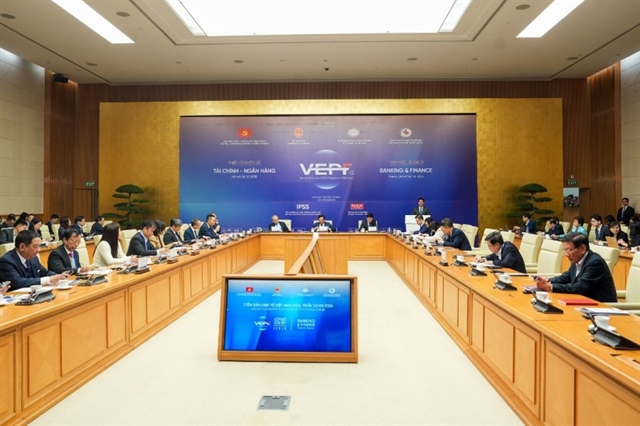Outstanding loans to FIEs not big, not worrying
Outstanding loans to FIEs not big, not worrying
The outstanding loans given to foreign invested enterprises (FIEs) just account for a small proportion in the total outstanding loans of the whole banking system, while the bad debt ratio is much lower than the average level.
Outstanding loans to FIEs low
The reports of 45 credit institutions, which provide 70 percent of the domestic banks’ loans to FIEs, showed that by the end of February 2012, the outstanding loans given to FIEs had reached 92.5 trillion dong, increasing by 0.15 percent over the end of 2011, and accounting for 3.6 percent of the total outstanding loans.
The watchdog agency has noted that there is a growing tendency of the capital flowing to the manufacturing sector, especially supporting industries.
Statistics show that by the end of February 2012, the capital lent to the manufacturing sector had reached 71 trillion dong, accounting for 77 percent of the total outstanding loans to FIEs. Of this amount, the capital lent to supporting industries had increased sharply by 5.82 percent in comparison with the end of 2011.
Meanwhile, the loans provided to non-production sector had reached 21.6 trillion dong, accounting for 23 percent of the total outstanding loans to FIEs, decreasing by 1.44 percent if compared with the end of 2011.
Commercial banks all have reported that the risks in lending to FIEs are not high. By the end of February 2012, the bad debt ratio of the FIEs had been 2.07 percent, or lower than the average level of the whole banking system.
Most of the loans provided by foreign banks
The reports have also shown that more than 50 percent of the loans given to FIEs came from joint venture or foreign banks. 49.75 trillion dong had been provided by foreign invested banks, or 54 percent of the total outstanding loans provided to FIEs of the whole banking system.
In general, FIEs have been strictly following the regulations on foreign currency management and registering the borrowing as stipulated by the laws.
However, problems have been found in the financial management at FIEs, which has influenced the work of controlling the lending and capital use of the enterprises.
In 2011, when inspecting the FIEs reporting losses, the taxation bodies found abnormal things, thus leading to the decision to reduce the reported loss of 4400 billion dong at 856 enterprises, which was 2.5 times higher than that of the previous year. Besides, taxation bodies collected 1650 billion dong in tax arrears and fines, or four times higher than that of 2010.
In some cases, FIEs registered the borrowing of capital which they said would be paid for the material imports. However, in fact, they got the capital support from the holding companies which also provided input materials and were responsible for the outlet.
FIEs have been found as registering high chartered capital, but have been very slow in making capital contribution. In many cases, they later informed about the chartered capital reduction from the initially registered levels. As a result, the registered chartered capital does not always truly reflect the investments and the actual financial capability of FIEs.
vietnamnet























